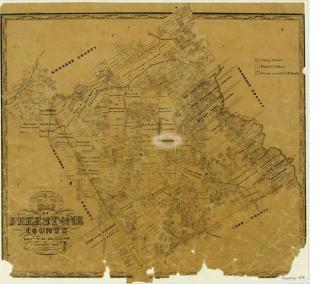About Fairfield

Our History
Originally named Mound Prairie, the community began life around 1850 on a 100 acre tract of land donated by David Hall Love when the location was chosen to be the county seat. A post office was granted in 1851 and by the following year, there were three dry-goods, a grocery, at least two hotels and a jail. The first courthouse (of four) was constructed in 1852, and the others came in 1854-56, 1891-92, and 1919-21. In 1891 and again in 1918 Wortham and Teague both challenged Fairfield for the role of county seat but both lost to the established Fairfield.
The town's first paper was the weekly Texas Pioneer, set up in 1857. In 1854 a school for girls opened in the second floor of the Masonic lodge and two years later a boy’s school opened in another building. The Fairfield Female College opened in 1859, enrolling over 100 students the first year. During Reconstruction, Freestone County was (briefly) one of four Texas counties placed under martial law. The town had a population of 500 in the mid 1880s served by four general stores, five groceries and two hotels.
The town enjoyed the 1880s, unaware of the calamities that were on the way. A meningitis outbreak in 1890 killed 32, but this was almost forgotten in 1900 when a 1900 tornado struck. In 1903 the boll weevil infestation destroyed the cotton crop and if that wasn’t enough, a fire in 1911 burned much of what was missed by the tornado.
Despite the serious setbacks, and never having a railroad connection, Fairfield grew. By 1904 the population was up to 629, growing slowly but steadily to 1,047 by 1940 and doubling to 2,074 by 1970. Fairfield never acquired a railroad. It had been bypassed by the Trinity and Brazos Valley in 1907, but managed to survive — a most unusual occurrence in Texas. Fairfield got a waterworks and infrastructure in the 30s, although the town never had a library until the mid 50s. From 1890 through the early 1930s, Fairfield hosted a 3-day Confederate reunion of Confederate veterans. In 1951 the town’s centennial celebration was held on the former reunion campground which morphed into an annual homecoming festival, and later became the Freestone County Fair.

